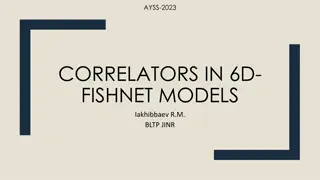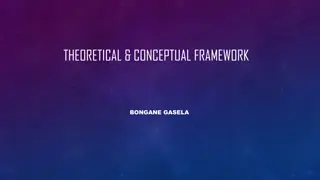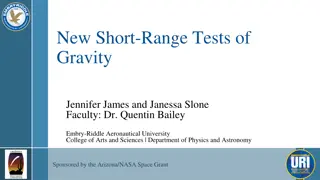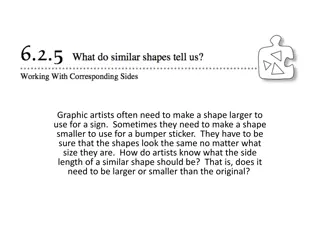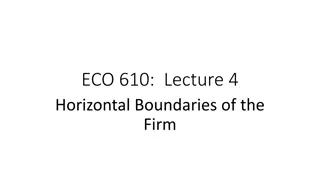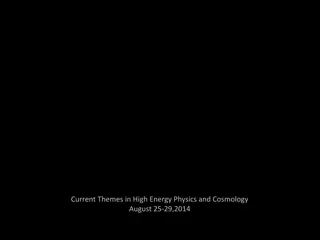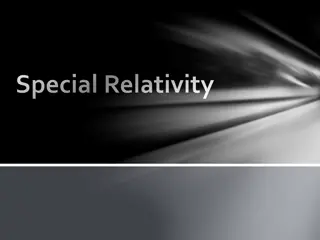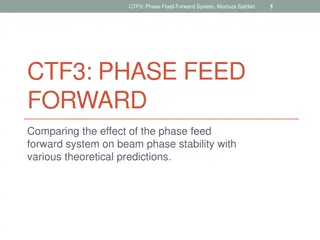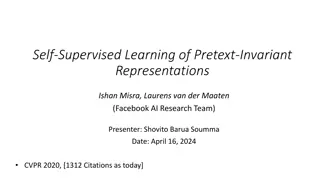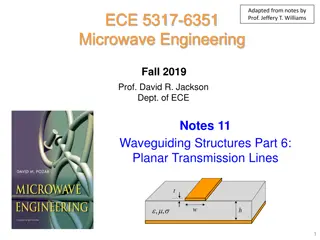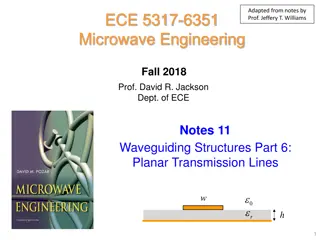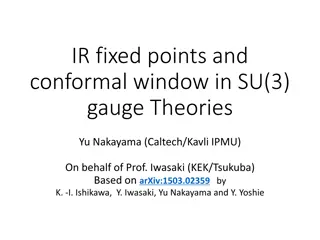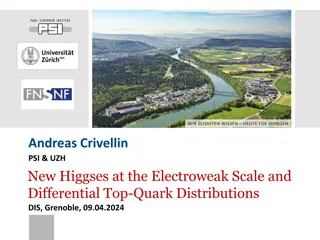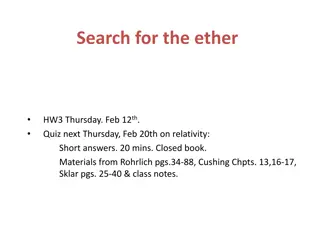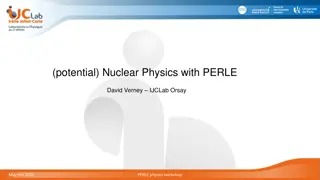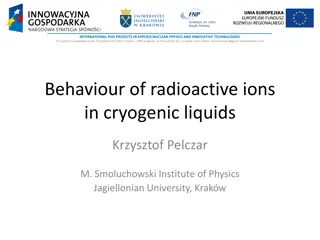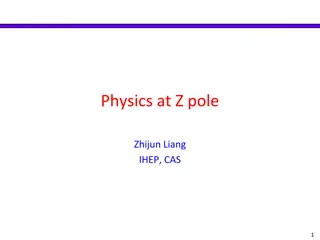Understanding Scale vs. Conformal Invariance in Theoretical Physics
Delve into the intriguing concepts of scale invariance and conformal invariance in theoretical physics through discussions on topics such as topological twist, critical phenomena, unitarity arguments, and counterexamples. Explore the fine balance between these two powerful symmetries and their implications on various quantum field theories.
Download Presentation

Please find below an Image/Link to download the presentation.
The content on the website is provided AS IS for your information and personal use only. It may not be sold, licensed, or shared on other websites without obtaining consent from the author. Download presentation by click this link. If you encounter any issues during the download, it is possible that the publisher has removed the file from their server.
E N D
Presentation Transcript
(Topological) Twist and Scale vs Conformal invariance Yu Nakayama (Rikkyo) A part of this talk is based on discussions with Slava Rychkov
Books from Ooguri-san Ooguri-san is not only a pioneer and a role model but also a host father for many generations of physicists who strives to study in US from other countries
BCOVs real preprint Your brain functions sharpest at your age, and these days never come back.
Scale vs Conformal Conformal invariance is very powerful (e.g. conformal bootstrap) in critical phenomena Critical phenomena Scale invariance Gap between scale invariance and conformal invariance?
Scale vs Conformal Consider a local relativistic (Euclidean) QFT with (symmetric) energy-momentum tensor Scale invariance (w/o conformal) :virial current Conformal
A simple counter-example (El-Shawk Nakayama Rychkov) Consider free U(1) gauge theory in d-dimension Massless obviously scale invariant But it is not conformal Can be generalized to free p-form gauge theories
Argument for scale conformal? Unitarity argument This is the proof by Zamoldochkov and Polchinski in d=2 (or d=4 by Schwimmer, Komargodski, Luty, Rattazzi, Polchinski etc) If scale without conformal, c (or a) decreases forever in unitary theory, is essentially (on-shell) zero Genericity argument Requires dimension d-1 vector operator Generically most operators get renormalization (anomalous dimensions) Looks very fine-tuned and unlikely
(Topological) twist Consider d-dim CFT with O(d) internal symmetry Define twisted Euclidean rotation by O(d) in the product of O(d) x O(d) Lorentz spin and internal spin mixed E.g. becomes tensor + scalar Unitarity (reflection positivity) is lost Spinor-supersymmetry scalar-supersymmetry
Twist and conformal symmetry In curved background we add extra connection Energy-momentum tensor is modified Special conformal symmetry appears to be lost (Witten) Note, however, we did not do anything in flat space ( special conformal symmetry is hidden) If we take BRST cohomology, it becomes topological
Adding twisted deformations We have new twisted scalar deformations ! twisted RG flow (not studied very much) Novel fixed points would be scale without conformal Perturbatively it must be so because small RG effects cannot get rid of virial current With the deformation, one cannot undone the twist! Quite general. Argument against genericity?
QFT construction 1 Consider O(d) model Twist free vector in Feynman gauge Add a scalar deformation Can we find non-trivial fixed point? Yes, but just Wilson-Fisher fixed point (with twist that can be undone) Now with twisted scalar deformation Any scale w/o conformal fixed point?
QFT construction 2 Now with twisted scalar deformation Any scale w/o conformal fixed point? (only at particular , it is conformal) Do perturbative epsilon expansion Aharony-Fisher (1973) did the analysis and found the fixed point with ( Landau gauge fixed point) free scale without conformal : interacting scale without conformal! Although interacting, Virial current is not renormalized (YN-Rychkov)
Physical realization Is topological twist just a mathematical tool? Consider Heisenberg magnet: O(3) inv Landau-Ginzburg theory Index I was is originally space-time vector! Separation of spin and orbit is a (topological) twist! Dipolar-Dipolar interaction breaks the spin-orbit separation So in the actual magnet, we may have to introduce topologically twisted scalar deformations Experimental evidence (say in EuO) suggests Aharony-Fisher fixed point (rather than Heisenberg) can be realized in nature (Mezei)
Holography 1: effective description We work on AdS4/CFT3 Einstein + SO(3) Yang-Mills (in Euclidean signature) Twisted deformation with novel fixed points would be scale w/o conformal ansatz Scale (w/o conformal) solution Geometry is AdS but matter breaks isometry Cannot expect in Lorentzian signature, but possible in Euclidean signature because field strength is self-dual!
Holography 2: M-theory uplift We work on AdS4/CFT3 Consider (Euclidean) M-theory compactification on AdS4 x S7 Pope argued Einstein + cc + SO(3) YM is consistent truncation in Lorentzian signature Consistent truncation works in Euclidean signature as well (Consistency of the truncation is miraculous )
Holography 3:Cyclic RG solutions One can construct more general RG-flow solutions It shows a cyclic RG behavior, or discrete scale invariance Chern-Simons like deformation at UV
Summary Kanreki means returning to your birth Is it consistent with c-theorem or a-theorem? My suggestion: topological twist and self-dual field strength are the key! Ooguri-san is a world expert on them I wish you fruitful, prosperous and wonderful years ahead!
Cyclic RG in Efimov effect Discrete scale invariance is known to appear in Efimov effect (three-body interacting non- relativistic bosons) by solving Schrodinger eq. RG analysis gives cyclic flow (with familiar poles!)
Holography 0: Scale w/o Conformal? If one wants to realize d-dim Poincare + scale in d+1 dimensional geometry, it must be AdS (YN) If we have no Virial current, it must be conformal Coset space analysis (Schafer-Nameki-Yamazaki- Yoshida) Matter (as well as KK mode in extra dimension) can break AdS isometry (while preserving the AdS metric) This is suspicious in Lorentz signature (NEC), but maybe possible in Euclidean signature











